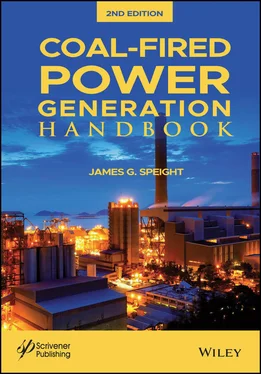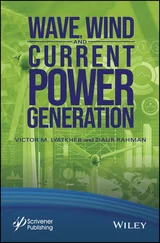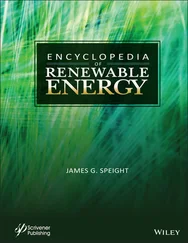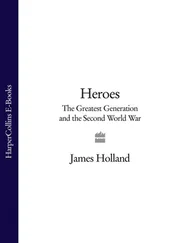Various polymeric flocculants exhibit some degree of selectivity for coal against mineral matter and include chemicals such as partially hydrolyzed polyacrylamide, nonionic polyacrylamide, polystyrene sulfonate, and polyacrylamide containing chelating and complexing groups. In some cases, selective flocculation processes suffer from relatively low selectivity. Thus, selective flocculation processes are usually run in multiple stages to remove the entrained ash-forming minerals.
Traditionally, precombustion cleaning has been concentrated on two major categories of cleaning technology: physical cleaning and chemical cleaning (Wheelock, 1977). A new category of coal cleaning, biological cleaning, has recently attracted much interest as advances have been made in microbial and enzymatic techniques for liberating sulfur and ash from coal (Dugan et al ., 1989; Beier, 1990; Couch, 1987, 1991).
Microbes are effective in converting organic sulfur compounds such as thiophene derivatives and dibenzothiophene derivatives. Organic sulfur removal is in the neighborhood of 25% (there are claims of higher removal of sulfur) and the combined use of microbes, either simultaneously or sequentially, could potentially improve organic sulfur rejection. The limiting factors appear to be those of accessibility and residence time. Therefore, finer size coal should be used not only to improve accessibility of microbes to coal particle surfaces but also to reduce the overall retention time in the bioreactor.
The water content of a coal reduces its heating value, causes handling difficulties, increases handling and transportation costs, and reduces yields in carbonization and other conversion processes. Reduction of the water content is often desirable. In fact, drying coal helps the coal to burn cleaner and more efficiently but because of the unique properties of each type of coal this drying process must be done differently.
Combined reserves of subbituminous coal and lignite (brown coal) make up approximately one-half of the world coal reserves and about one-half of the coal resources of the United States and these coals are rarely processed before shipment or use. However, the oxygen and moisture contents of low-rank coals are greater than those of bituminous coals, which reduces the heating value of the coal as mined, which increases the transportation cost on a heating value basis and reduces the thermal efficiency of the steam boilers that use these coals. One way to offset these disadvantages is to dry the coal before transportation or utilization. However, the characteristics of dried low-rank coal – it is friable, has a tendency to spontaneously heat, and readily reabsorbs moisture – constitute major obstacles that must be overcome to produce a saleable, transportable, dry coal product.
Water occurs in coals in three ways: (i) as inherent moisture contained in the internal pores of the coal substance, including water associated with the mineral impurities, (ii) as surface moisture wetting the external surfaces of the coal particles in which adsorption may play a small part, and (iii) as free water held by capillary forces in the interstices between the coal particles.
Inherent moisture is related to coal rank, being greatest for lignite and brown coals. However, the inherent moisture in coal can make a significant impact on the performance of low-rank coals (which are primarily used for electricity generation) and drying is generally restricted to (i) washed bituminous coals that are required to meet user specifications, and (ii) lignite or subbituminous coals that are employed for the manufacture of briquettes or of other specialty products such as absorbent carbon.
Surface moisture is related to the amount of available surface and the wettability of the coal but moisture contents are lower than might be expected from the available surface area because of the low wettability of coal compared with the surfaces of minerals. Surface moisture can be removed from washed higher rank (bituminous and anthracite) coals by drainage on a screen while the dewatering of washed small coal or coal fines can he accomplished by use of cyclones or centrifuges. If the moisture content must be reduced to lower levels there are two alternate methods which involve the use of rotary kilns or fluidized bed dryers. But such dried coal will reabsorb moisture on exposure to the atmosphere which may give rise to fire hazards as well as (explosion) hazards.
Furthermore, the water in the low-rank coals is progressively more strongly bound to the coal surface as the coal dries and equilibrium relative vapor pressure (or humidity) decreases. The water initially removed from the as-mined coal at close to the saturated vapor pressure (or 100% humidity) is water filling the large pores and inter-particle spaces in the coal. This water has the normal thermodynamic properties of free water. As the coal dries further, capillary water is removed with significant decrease in relative vapor pressure. Below 50% humidity, the water adsorbed in layers on the coal surface is progressively removed with increasing heat of vaporization required and lower vapor pressures due to the increasingly strong hydrogen bonding of the water molecules to the oxygen functional groups on the coal surface.
A distinction can also be made between water in larger pores and capillaries which passes through a liquid-solid freezing phase transition if the temperature is lowered in contrast to water in the smaller pores and surface layers which does not pass through this transition. However this is not significant to drying as the non-freezing water can still be evaporated if heat is applied or the vapor pressure lowered.
It is progressively more difficult to remove the more strongly bound water at lower moisture content. Also note that if a coal is dried to below the equilibrium moisture content ( Chapter 5) and then exposed to a humid atmosphere it will re-adsorb moisture until it is in equilibrium with the ambient humidity. This can raise the temperature and exacerbate the propensity of low-rank coals and their upgraded products to spontaneous ignition and thence to spontaneous combustion during transport and storage ( Chapters 3, 4).
Loss of volatile organic compounds (VOC) as a result of drying coal at high temperatures is another issue that must be addressed. The loss of useful volatile matter from coal reduces the calorific value while at the same time increases the risk of fire from the combustion of volatile organic compounds. Drying at lower temperature or by using a slight vacuum environment can minimize the loss of volatile organic compounds but such approaches result in a lower rate of drying.
Thermal drying , particularly of metallurgical coals, has found extensive application in some parts of the “coal” world and there is growing interest in the development of efficient methods for drying low-rank coals. Thermal drying entails contacting wet coal particles with hot gases, usually combustion products, under conditions that promote evaporation of the surface moisture without causing degradation or incipient combustion of the coal.
In the process, the clean coal from various wet cleaning processes is wet and requires drying to make it suitable for transportation and final consumption. Thermal drying is employed to dry the wet coal. Drying in the thermal dryer is achieved by a direct contact between the wet coal and currents of hot combustion gases. Various dryers marketed by different manufacturers work on the same basic principle.
The fluid-bed dryer operates under negative pressure in which drying gases are drawn from the heat source through a fluidizing chamber. Dryer and furnace temperature controllers are employed in the control system to readjust the heat input to match the evaporative load changes.
Читать дальше












